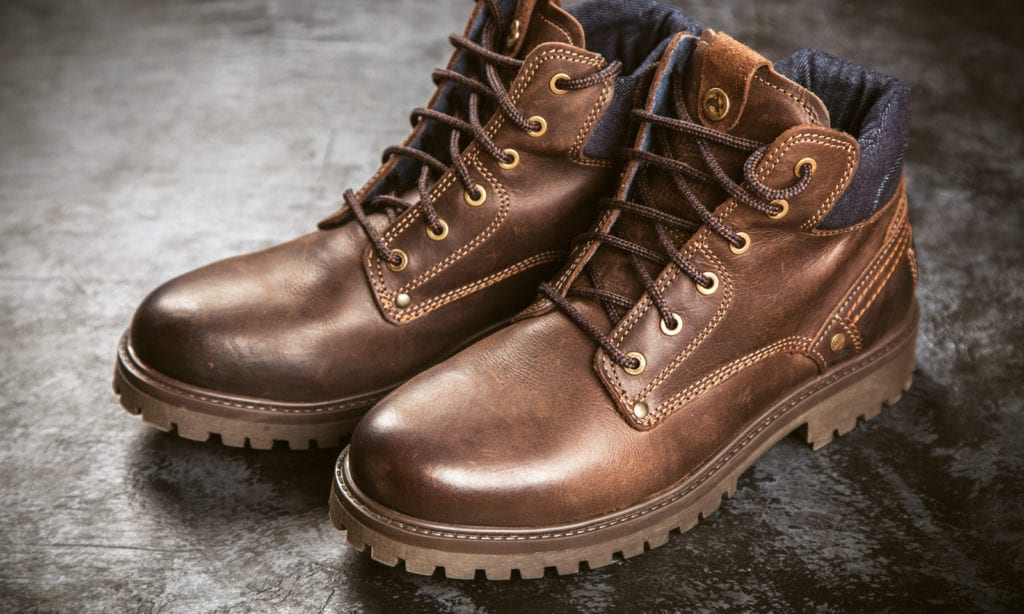Composite Toe vs. Steel Toe Boots

Modern work boots are capable of being lighter than steel and just as protective, increasing workplace safety while being as comfortable as they ever have been. However, there are two major types that you will probably end up having to choose between, composite toe boots and steel toe boots. Which is better, and what actually makes them different from one another?
Composite Toe Work Boots
Composite toe boots are the more modern of the two options, using absolutely no metal. Instead, the safety toe caps are made with materials like plastic, carbon fiber, Kevlar, and various types of rubber – this gives them a high level of durability and protection without the problems posed by a metal toe. Because the components are lighter, the work boots also don’t weigh as much and have the benefits of any materials used in the design.
Since they are newer, composite toe designs might be slightly harder to find and can cost more than alternative options. This varies depending on the design, quality, and type of boots you are getting, so many of them are still very affordable if you look in the right places. The only major drawback can be the fact that some of them barely stretch over ASTM safety requirements, especially those that focus more on lower weight than higher protection.
Steel Toe Work Boots
Boots with steel toes are much older than composite toes and have a long history behind them. As the name suggests, they rely on steel safety toe caps that provide physical protection from impacts and punctures. Lower prices and widespread availability make them much easier to find than other options, and they have the distinction of being heavier overall, which can come in handy during tasks where keeping your balance is important.
Due to how ASTM safety standards are laid out, even the most basic steel toe boots will exceed the safety requirements that they need to meet. Some businesses will even offer steel toe boots as part of the standard work uniform. If a company has its own safety rules that employees need to follow, steel toe boots are likely going to fulfill all of them, too, especially in industrial settings or when working with heavy machinery.
Composite Toe vs. Steel Toe Differences
While steel toe boots and composite toe boots are similar in a lot of ways, they have some key differences that make them suitable for slightly different tasks. While the average person might not be able to tell them apart (other than the fact that composite boots are lighter than steel toe boots), there will always be situations where one is safer or more reliable than the other. Choosing the right kind of boot with the right sort of toe can make a big difference in how comfortable you feel while wearing them.
Metal vs. No Metal
The most obvious difference is the fact that steel toe boots contain metal. This allows them to set off metal detectors and get attracted or pushed by magnets: this might not be a problem in most workplaces, but in certain niche situations, it can be a serious issue. For example, walking into an airport or getting a CAT scan will require you to remove your steel toe work boots, and working around industrial magnets can become slightly less safe depending on how powerful they are.
Since composite work boots don’t have these problems, they can be better suited to these situations and locations, but they also have the downside of lacking the natural protection of metal. They won’t set off metal detectors (including hand-held metal detectors that you are using) but they have to rely on layers of different materials that all have their own weaknesses.
Toe Simplicity
Steel toe boots have the most direct type of safety toe available. They are generally built with a single steel piece in each boot that acts as a cover, meaning that they are straightforward and can be repaired easily if they get damaged. While this still leaves them vulnerable to anything that can corrode steel, they can be thicker and will provide more protection from objects that might penetrate or bash the outer layer.
Composite safety toe designs are more complex. They can protect against many more things and are not vulnerable to being corroded, but they also aren’t easy to repair. As an added issue, a composite toe has the problem of being made of several thin layers, providing less protection per layer in exchange for a more universal set of safety features. You will be safer at work, but too much of a single hazard will still break through.
Hot and Cold Weather Protection
Composite toe designs are the best for weather-related risks. Because they don’t use any metal, they can be great insulators and will keep your feet at a stable temperature for much longer – some will even be specifically designed for use in extreme colds or extreme heat. Metal is also harder than the composite materials, meaning that composite toe boots can stay comfortable for longer.
Steel toe boots, by contrast, are the exact opposite. The steel toes make good conductors, so your toe section will heat up or cool down quickly according to the outside temperature. In extreme cold, this can freeze your toes and even lead to frostbite. In extreme heat, it will lead to burned toes and skin damage. This, combined with the lower level of comfort on the wearer’s toes, can easily lead to unnecessary foot pain.